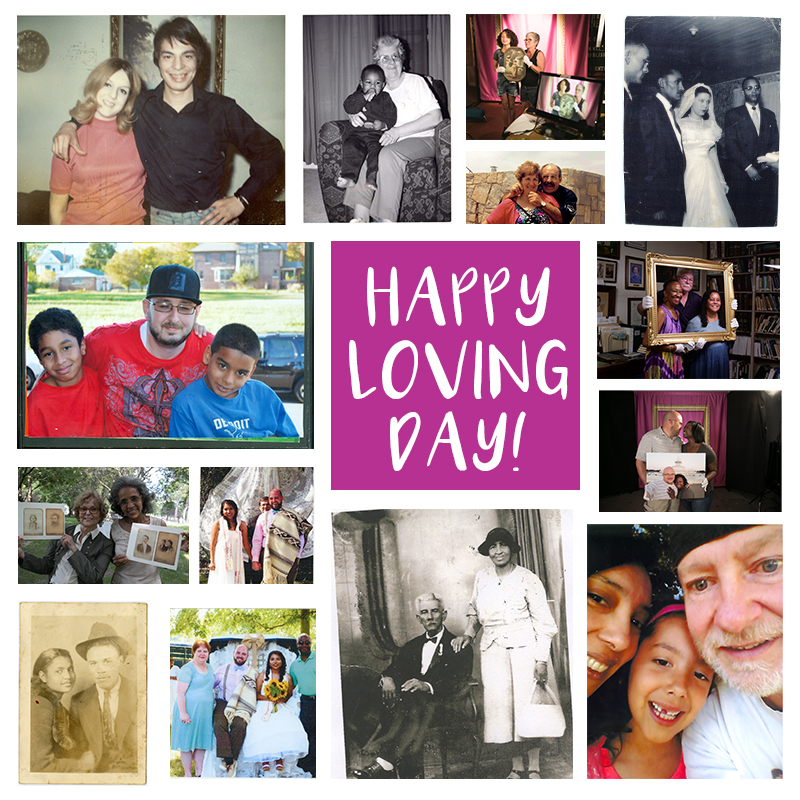On June 12th, we celebrate National Loving Day. Loving Day is an annual celebration that commemorates the 1967 Loving v Virginia Supreme Court Decision that struck down anti-miscegenation laws, making restrictions on interracial marriages illegal across the country.
For this monumental moment in history, we can thank Mildred & Richard Loving. Mildred Jeter was a Black and Native American woman and Richard Loving was a white man. The two grew up together in Center Point, VA. At that time, interracial marriage, sex and cohabitation were banned in 18 U.S. states including their home state of Virginia. This didn’t stop the Lovings. In 1958, they married in Washington, D.C. and soon returned to Virginia to start their lives together. A few months later, police officers burst into their home in the middle of the night and declared their marriage license invalid, promptly arresting the couple for miscegenation. The newlyweds were found guilty and sentenced to three years. The judge in the case agreed to suspend the Loving’s sentence only if they agreed to leave Virginia for 25 years. The Lovings packed up their lives and relocated to Washington D.C.
Despite avoiding jail time, the Lovings new life in Washington D.C. was far from easy as they faced severe discrimination. In 1958, 96% of the American public was against interracial marriage (Gallup 1958). Mildred Loving wrote a letter about their struggles that was eventually passed on to the American Civil Liberties Union. The ACLU filed a motion on their behalf, appealing the Virginia ruling. Together they fought all the way to the Supreme Court.
A crucial moment for the Lovings came in 1966 when LIFE magazine decided to send photographer Grey Villet to capture the family of five. Villet’s photos were instrumental in shifting public perception about interracial marriage. Photography during that time often reflected the struggles of the Civil Rights Movement, much of which revealed the severe violence that was happening all over the country. The Loving’s LIFE article depicted those changing times in a different light, through a lens of love and compassion. The photos had a real sense of intimacy. One catches Richard on the couch with his head in Mildred’s lap. Another shows the three Loving children laughing and playing together. The warmth and honesty of the photos was powerful. At their core, they captured the love between husband and wife, parent and child, brother and sister – relationships that people across the country identified with. This changed the way many perceived interracial marriages and relationships. The LIFE photos illustrated the beauty that follows being witness to others having the freedom to love.
The photos and videos we share have the potential to challenge current day prejudices because they offer each of us insight into the lives of people we may not understand. In a time when misconceptions about others, from migrants to members of the LGBT community, are rampant and proliferating, photography is a transformative tool we can use to combat the negative and detrimental ideas and narratives that continue to shape public discourse. Loving Day gives us the opportunity to do just that.
Today is the 52nd anniversary of the landmark Loving Day decision. While it is not a federal holiday yet, you don’t need to be in an interracial couple to celebrate Loving Day. Loving Day is not only a day to celebrate interracial love and fighting for equality, but it is also a day to remind us of the power of love to bring people together and build community especially when it’s seen in a new way. No matter our race, gender identity, age, nationality, religion or ability, love will always win.
Check out http://www.lovingday.org/share to see and read Loving Day stories and photos and read stories from families across the country!



No comments yet.